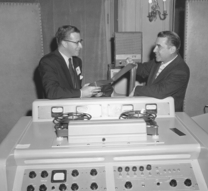- Home
- TV History
- Network Studios History
- Cameras
- Archives
- Viewseum
- About / Comments
Skip to content
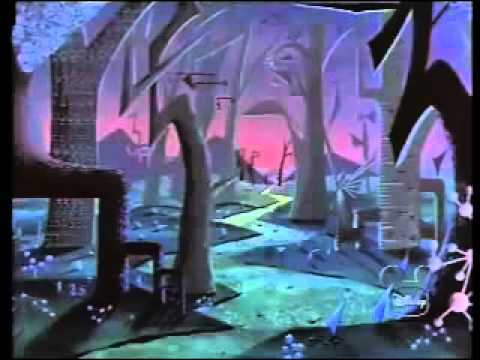



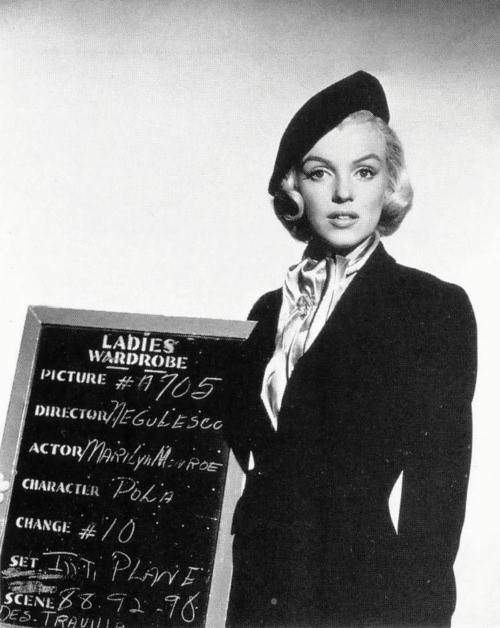

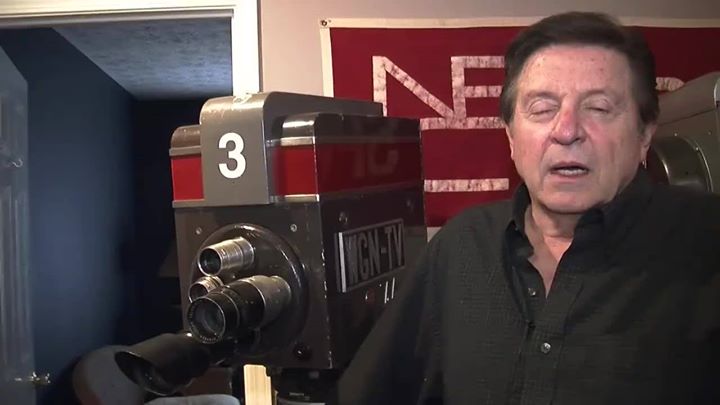

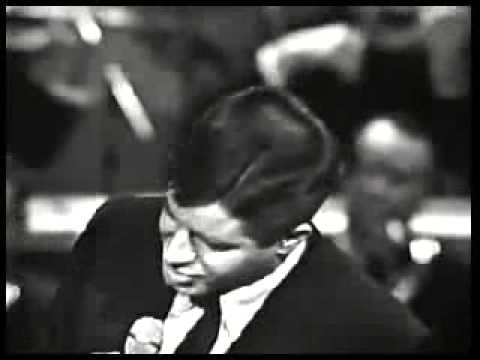

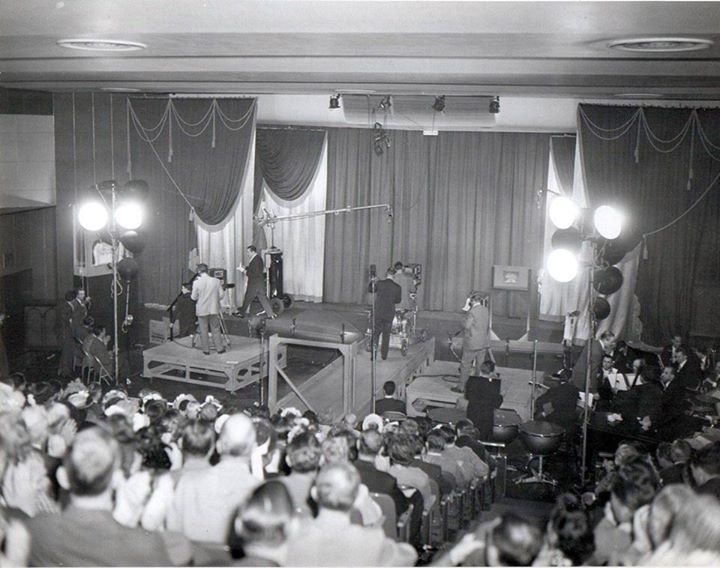





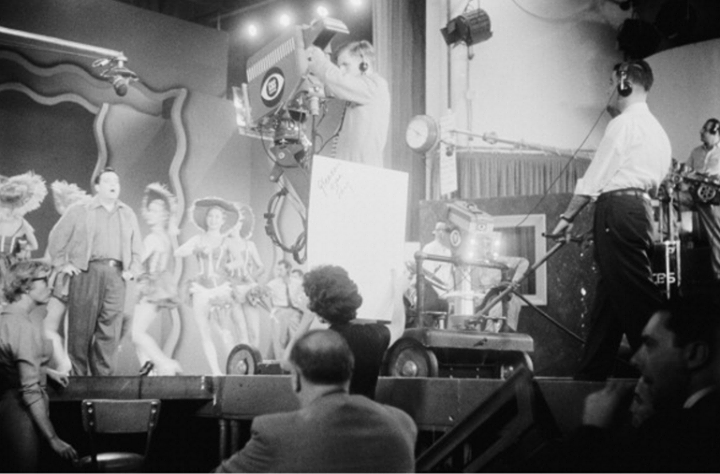



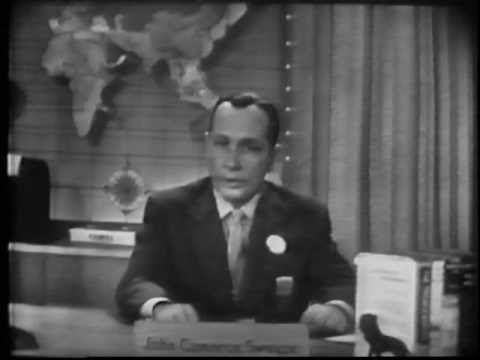

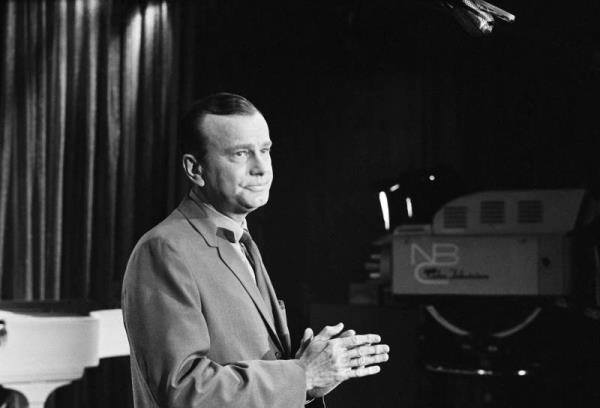

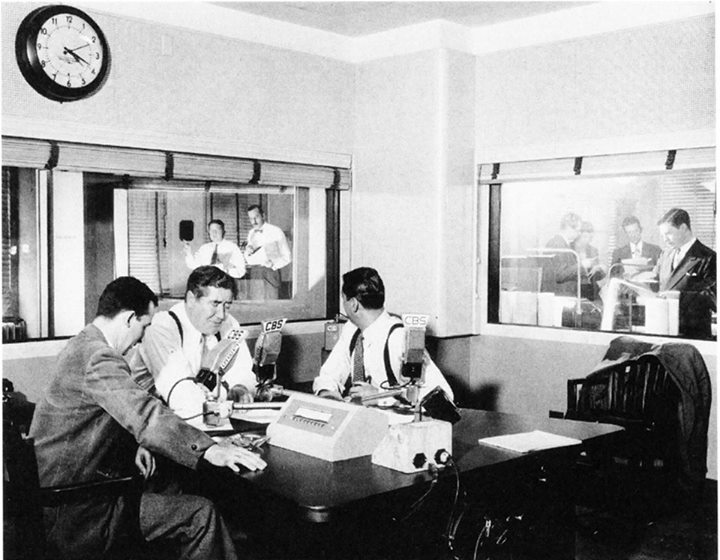

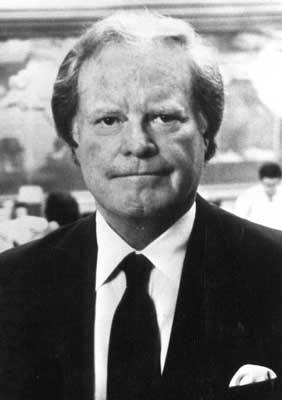

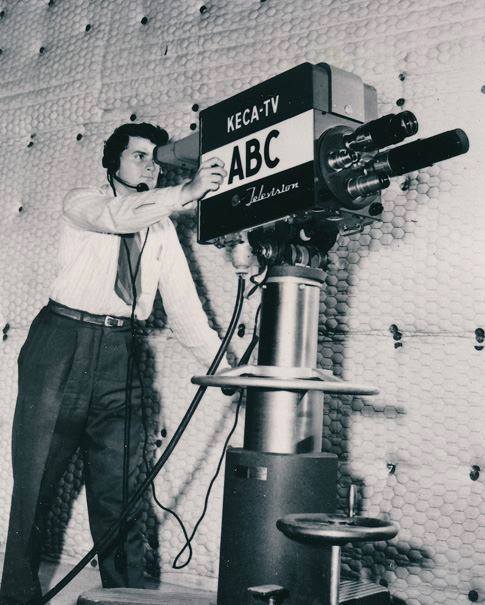





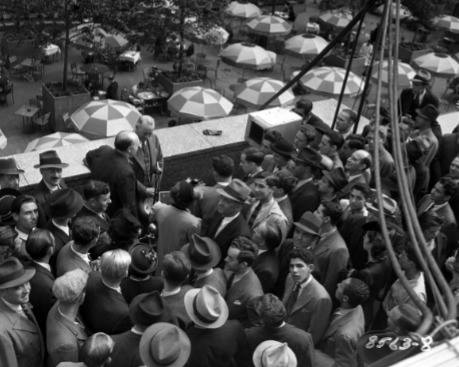

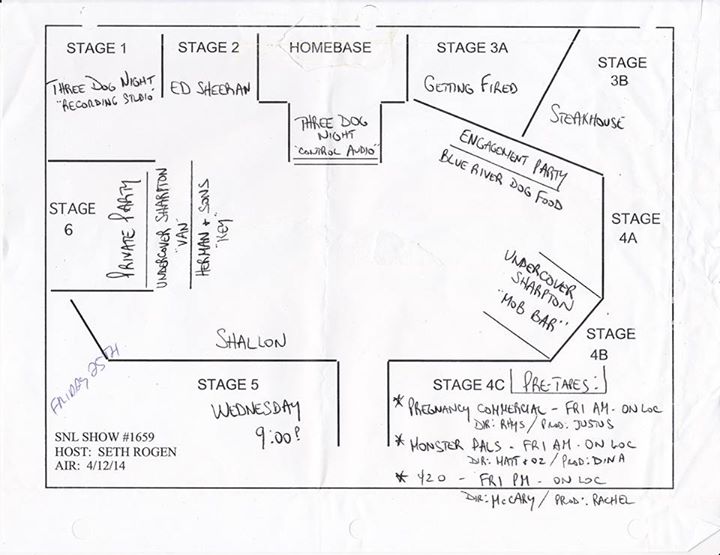

Posts in Category: TV History
Page 15 of 136
« Previous
1
2
3
4
5
6
7
8
9
10
11
12
13
14
15
16
17
18
19
20
21
22
23
24
25
26
27
28
29
30
31
32
33
34
35
36
37
38
39
40
41
42
43
44
45
46
47
48
49
50
51
52
53
54
55
56
57
58
59
60
61
62
63
64
65
66
67
68
69
70
71
72
73
74
75
76
77
78
79
80
81
82
83
84
85
86
87
88
89
90
91
92
93
94
95
96
97
98
99
100
101
102
103
104
105
106
107
108
109
110
111
112
113
114
115
116
117
118
119
120
121
122
123
124
125
126
127
128
129
130
131
132
133
134
135
136
Next » 

The Whole Story Of Disney On Television…
On September 24, 2016
- TV History
The Whole Story Of Disney On Television…
On September 24, 1961, “Walt Disney’s Wonderful World Of Color” debuted on NBC. To mark the occasion, of the anniversary, here is that first color broadcast, and the whole story of Disney on TV, which starts at ABC. Enjoy and share! -Bobby Ellerbee
____________________________________________________
Walt Disney was the first major Hollywood producer to venture into television. His anthology series has graced network TV for 50 years, save for a couple of extended hiatuses, under eight names.
Besides the consistency of quality through the years, one of its most memorable aspects have been the title sequences encompassing a memorable musical accompaniment, rapid-edit clips of all-things Disney and Tinker Bell flying around the screen.
CBS and NBC both rejected the idea of a weekly Disney program, in part because any network airing the show was asked to help finance Walt’s idea for a new kind of amusement park: a clean, family-friendly park consisting of different themed areas. ABC signed on to the idea with the hope Walt could deliver a major success for the struggling network, which could only boast of two moderate hits in the early 1950s: The Lone Ranger and The Adventures of Ozzie and Harriet.
The cost to ABC was significant: a seven year contract valued at $35 million with licensing fees for each episode at $50,000. Additionally, the network would own a 34 percent interest in the park (Disney would buy out ABC’s stake in 1961).Tying in with the soon-to-open theme park in California, Disneyland premiered on Wednesday, October 27, 1954.
As Tinker Bell flew across the screen and the award-winning song “When You Wish Upon a Star” from Pinocchio as the theme, announcer Dick Wesson would briefly describe the four lands, leading up to the episode title: “Each week as you enter this timeless land, one of these many worlds will open to you. FRONTIERLAND– Tall tales and true from the legendary past. TOMMOROWLAND– Promise of things to come. ADVENTURELAND– The wonder world of nature’s own realm. FANTASYLAND– The happiest kingdom of them all.”
The first episode was called “The Disneyland Story” and in the first half-hour millions of viewers saw their first glimpse of the Disneyland theme park as well as previews of upcoming shows. The second half appropriately served as a tribute to Disney’s most famous cartoon character, Mickey Mouse. In fact, an often-used quote of Walt’s comes from this segment: “I only hope we never lose sight of one thing … that it was all started by a mouse.”
It was also in that first show that Fess Parker first performed a song that would soon climb to the top of the music charts and help make the unknown actor a star: The Ballad of Davy Crockett, King of the Wild Frontier.
Those Davy Crockett shows were the most popular episodes of that first year, if not the entire anthology’s run. Considered to be the first television miniseries, the three-part shows were made at a total cost of around $700,000– a large amount for any television show at the time. All the episodes were filmed in color, although broadcast by ABC in black and white.
Their success led the Disney Studios to edit the three episodes into a feature film for theaters in the summer of 1955. Davy Crockett, King of the Wild Frontier grossed a then-impressive $2.5 million. However, this was rather small compared to the estimated total sales of Davy Crockett merchandise: $300 million! Nobody anticipated its success, least of whom Walt himself.
At the end of the third installment, poor Davy was killed (off-screen, of course) at The Alamo. So for the following season, two additional Crockett episodes were filmed chronicling his early exploits. A second feature re-edited from these programs was released in 1956 as Davy Crockett and the River Pirates and was also a success.
Thanks to Davy Crockett, Disney had indeed delivered a hit: Disneyland was #6 in the 1954-55 Nielsen ratings and won the Emmy for Best Variety Series. In its second year, the series would achieve its highest seasonal rating as the #4 show.
By 1958 viewers had obviously become quite familiar with the different lands and a full description was no longer deemed necessary. Although the anthology was renamed Walt Disney Presents, the series itself should have changed its name to simply “Frontierland,” as these made up the bulk of episodes for the next three seasons.
Due almost entirely to the success of Davy Crockett, ABC executives insisted on the Western emphasis. Instead of Mickey and friends, viewers were often treated to the adventures of Texas John Slaughter, Elfego Baca (with Robert Loggia), and Leslie Nielsen as Francis Marion, The Swamp Fox. There was not much Walt could do as he was bind to a seven-year contract. Once that expired in 1961 he was free to change networks if he wished. That is exactly what he did. More importantly, Walt could now do what he could never convince ABC to go along with, and that was to broadcast in full color.
The majority of the ABC episodes had been filmed in color. This hindsight would pay off beginning in the first summer of reruns on NBC. It was that network’s commitment to colorcasting that Walt found most attractive, if not marketable. With sponsorship from RCA (then owner of NBC), Walt Disney’s Wonderful World of Color premiered at 7:30 PM on Sunday, September 24, 1961.
With an original song by Richard and Robert Sherman, viewers with color sets were mesmerized as flashes of animated red, yellow and blue fireworks burst behind Sleeping Beauty’s castle at Disneyland. Up flew Tinker Bell and with a few waves of her wand filled the screen with more colors blending into a kaleidoscope of Disney characters as a chorus thundered, “COLOR!” This sounded much better than “MONOCHROME!” which is how most viewers that first season saw Wonderful World of Color.
Still sales of color TV’s increased dramatically over the following months and many baby boomers have fond memories of watching Uncle Walt Sunday nights in living color. Like the first episode in 1954, “An Adventure in Color/Mathmagicland” consisted of two main segments. The first half introduced the new format and a new character: Professor Ludwig Von Drake, a relative of Donald Duck.
Disney’s top duck himself took center stage for the second half in a cartoon about mathematics, first released to theaters in 1959. The Von Drake episodes could be considered some of the funniest hours in the anthology series, due in part to Paul Frees’ often-improvised dialogue as the befuddled Professor.
By the mid-1960s Wonderful World of Color had firmly established itself as a top twenty series. Walt’s segments became as anticipated as the presentations themselves. Whether it be a simple introduction, interaction with animals or the cartoon characters or hosting a show from Disneyland, his warm and friendly manner made each episode something special to watch.
During this time a number of multi-part episodes made especially for the series were filmed in Europe and released theatrically there. One notable example is the three-part 1964 miniseries “The Scarecrow of Romney Marsh” which was released to U.S. theaters as Dr. Syn – Alias The Scarecrow twelve years after its initial television airing and European theatrical release. Appearing in the title role was Patrick McGoohan, whom would later star in the cult TV classic, The Prisoner.
Walt Disney died on December 15, 1966. The episode broadcast the following Sunday was “Disneyland Around the Seasons” in which Walt talked about new and upcoming attractions at his beloved park (in its original telecast, a portion of Walt’s narrative was substituted by a brief tribute from Dick Van Dyke and NBC newsman Chet Huntley).
After his final introduction aired on April 2, 1967 there would be no regular host for the remainder of the anthology’s original run. The series continued as Walt Disney’s Wonderful World of Color for another two years. To many it was still seen as Walt’s Show even though he only turned up in a brief clip during the opening titles and in reruns of course.
The name itself was fast becoming antiquated. In 1969 the anthology became The Wonderful World of Disney. For a new theme, Disney staff composer George Bruns arranged a medley of familiar tunes: “Someday My Prince Will Come” and “Whistle While You Work” from Snow White and the Seven Dwarfs, “When You Wish Upon a Star,” “Chim Chim Cher-ee” from Mary Poppins, “Zip-A-Dee-Doo-Dah” from Song of the South, “Davy Crockett,” and “Bibbidi-Bobbidi-Boo” from Cinderella.
During the next decade the arrangement of songs in the opening medley as well as the film clips would change every few years or so to include more recent fare (even the familiar fireworks scene that started each show would change in 1972, shifting to Cinderella’s Castle at Walt Disney World in Florida).
The overall anthology product would also change during the ’70s, although not necessarily for the better. The number of original episodes would gradually dwindle, with an increasing reliance on feature films (generally less successful movies and none of the full-length animated features) and reruns from earlier seasons.
A common criticism of the anthology was that episodes originating from Disneyland or the Walt Disney World Resort were nothing more than glorified commercials. Essentially this was true, but ultimately they became something of historical time capsule pieces. They’re fun to watch now just to see how much things have changed at the Disney parks and resorts through the years.
For a while ratings remained strong, so consistent that NBC gave The Wonderful World of Disney an automatic renewal through 1978. But in 1975 a slow decline began. Moved back to 7 PM and facing new competition from CBS’s 60 Minutes, Disney fell out of the top twenty. Further erosion occurred in early 1977 as ABC successfully launched the teen-oriented drama The Hardy Boys/Nancy Drew Mysteries. It was also of no help that audiences were turning away from the Disney product in general, with the exception of the theme parks and merchandising.
Facing a threat of cancellation from NBC- itself having become ratings challenged following ABC’s rise to #1 in the mid 1970s- the anthology underwent a major makeover in 1979. For the first time since the 1960s, an original theme was developed. John Debney and John Klawitter composed a disco-flavored song that welcomed viewers to the new Disney’s Wonderful World.
Bridging the two parts of the theme was a program preview narrated by Rowan and Martin’s Laugh-In announcer Gary Owens. Dazzling computer-generated graphics and an abundance of clips – but no fireworks or Tinker Bell – supported the feeling expressed in the lyrics that this was “the friendly old place” with “a happy new face.”
Appropriately, the closing music thanked viewers for watching. In a flashback to the original themed format, many episodes were divided into one of four categories: Fantasy Night, Adventure Night, Comedy Night and Animation Night. Beneath the flashy surface however was more of the same: few original shows, re-treads of theatrical movies, far too many repeats and even frequent preemptions. Ratings did increase slightly and that was enough to give Disney another two years on NBC before executives announced the end of the “world.”
Almost immediately, CBS came to the rescue promising a renewed commitment to original episodes and a move to Saturday nights. After a summer of extensive promotion, Walt Disney premiered on September 26, 1981 with part one of the 1969 hit The Love Bug. Ironically, this was actually a rerun having previously aired as a two-hour Disney’s Wonderful World presentation! Like the former series the opening graphics were computer-generated, this time featuring still photos and illustrations from the theme parks, films and characters. The sole theme once again was an instrumental version of “When You Wish Upon A Star.”
There was a substantial increase in original episodes that first CBS year as were the overall ratings. Some of the original shows served as pilots for proposed spin-offs; a few of which did make it to limited-run status, but no further. The second CBS year saw another increase in reruns and with that came rumors that the anthology had finally outlived its purpose and would be canceled. The series was even taken off the air for several months following a move to Tuesdays in a futile attempt to increase viewership.
On April 18, 1983 when Walt Disney Productions launched The Disney Channel, thereby focusing nearly all its television resources on the cable service. Shortly thereafter, CBS announced that Walt Disney would only be seen as an occasional special. On September 24, 1983, an important era in television history came to a quiet conclusion with “Walt Disney’s Mickey and Donald,” a compilation of classic cartoons. Or had it?
Following a management shakeup in September 1984, newly installed Chairman Michael Eisner expressed his desire to return Disney programming to network television on a regular basis. A number of individual programs came first, including The Golden Girls produced by the new Touchstone division.
The television flagship would ultimately be an anthology series. ABC had the most interest in reviving the format and amid much fanfare The Disney Sunday Movie premiered on February 2, 1986 hosted by Eisner himself. Again an instrumental version of “When You Wish Upon A Star” was used as the theme and even Tinker Bell came out of retirement to open each week’s show.
For most of its 2 1/2 year run, Sunday Movie aired in a two-hour format. To let viewers know this new series bore a direct kinship to the old, a few classic reruns were seen during the summer of 1986. Nostalgia and ratings were high initially, but both eventually wore down. The old nemesis 60 Minutes was as strong as ever and eventually pushed Sunday Movie back to one hour, then off ABC altogether.
As if history was repeating itself, NBC gladly picked up the series in 1988, re-christening it The Magical World of Disney. A “wheel” format of rotating miniseries was instituted including new Davy Crockett adventures (coincidentally, five episodes were produced– the same number as the original version), an action-adventure series called “Wild Jack” (three episodes made), a remake of “The Absent-Minded Professor” starring Harry Anderson of NBC’s hit sitcom Night Court (only two episodes made) and various special presentations.
This all soon faded back into the venerable (and vulnerable) anthology setting. In the 1989-90 season there was another attempt at miniseries programming in the form of a comedy series starring Barbara Eden called “Brand New Life” which was created by Chris Carter (yes, that Chris Carter of The X Files!). But after two lackluster years, the anthology series was again canceled with The Magical World of Disney name retained until 1996 for The Disney Channel’s weekly showcase of premiere movies and specials.
In 1996 The Walt Disney Company purchased Capital Cities/ABC Inc. for a record $19 billion, and shortly thereafter things seemed to come full-circle. In 1997, the anthology returned to Sundays as … The Wonderful World of Disney. Setting the tone for the weekly two-hour series, the opening show was the 1995 theatrical release Toy Story.
Other Disney animated and live-action blockbusters frequently turn up and there have been some outstanding original productions such as “Oliver Twist” with Richard Dryfuss, “Ruby Bridges,” the Whitney Houston-produced remake of “Cinderella,” “The Shirley Temple Story,” “Eloise at the Plaza,” “Eloise at Christmastime” (both based on the popular children’s books), remakes of “The Miracle Worker,” “Annie” and “The Music Man”; and in 2001 “The Man Behind the Myth,” a documentary about Walt’s life and work co-produced by his daughter Diane Disney Miller.
Until the fall of 2000 there was a mesmerizing (and Emmy-winning) title sequence as Tinker Bell flew across the screen to the music of “When You Wish Upon A Star” and “A Whole New World” from Aladdin. This was replaced by (in this author’s opinion) the worst opening sequence the anthology had ever produced as menacing images show people’s homes magically turning into castles.
Apparently someone or some people at ABC thought so too as a brief “Welcome to The Wonderful World of Disney” announcement is often used instead. In September of 2003, the series was moved from Sundays into yet another familiar time slot– Saturdays at 8 PM alternating with The ABC Saturday Movie of the Week. Classic episodes from the original 1954-83 run aired as part of The Disney Channel’s “Vault Disney” until that programming block was canceled in September 2002. Select episodes such as the original Davy Crockett and Disneyland-themed programs have been released in special DVD sets.
In an ever-changing and challenging environment both in fiction and in real-life, the Disney anthology series remains a haven for quality programming. It is something that has never wavered and reminds us that the world is still wonderful.To help commemorate 50 years of The Wonderful World of Disney, here is some general information of the show’s history, including some of the awards won over the decades.
Hosts
Walt Disney (October 27, 1954 to April 2, 1967)
Michael Eisner (February 2, 1986 to September 9, 1990– he continues to appear on an occasional basis in the current version)
Announcers*
Dick Wesson (1954-1979)
Dick Tufeld (Alternate Announcer, 1977-1979)
Gary Owens (1979-1981)
Mark Elliot (1981-1983)
Broadcast History
Disneyland (ABC)
October 27, 1954-September 3, 1958: Wednesday, 7:30 PM-8:30 PM
Walt Disney Presents (ABC)
September 12, 1958-September 25, 1959: Friday, 8:00 PM-9:00 PM
October 2, 1959-September 23, 1960: Friday, 7:30 PM-8:30 PM
September 25, 1960-September 17, 1961: Sunday, 6:30 PM-7:30 PM
Walt Disney’s Wonderful World of Color (NBC)
September 24, 1961-September 7, 1969: Sunday, 7:30 PM-8:30 PM
The Wonderful World of Disney (NBC)
September 14, 1969-August 31, 1975: Sunday, 7:30 PM-8:30 PM
September 14, 1975-October 19, 1975: Sunday, 7:00PM-8:00PM
October 26, 1975-December 7, 1975: Sunday, 7:00PM-9:00PM
December 21, 1975-September 4, 1977: Sunday, 7:00PM-8:00PM
September 11, 1977-October 23, 1977: Sunday, 7:00 PM-9:00 PM
October 30, 1977-September 2, 1979: Sunday, 7:00 PM-8:00 PM
Disney’s Wonderful World (NBC)
September 9, 1979-September 13, 1981: Sunday, 7:00PM-8:00PM
Walt Disney (CBS)
September 26, 1981-January 1, 1983: Saturday, 8:00 PM-9:00 PM
January 4, 1983-February 15, 1983: Tuesday, 8:00 PM-9:00 PM
July 9, 1983-September 24, 1983: Saturday, 8:00 PM-9:00 PM
(two irregularly scheduled airings on Tuesday, May 3, 1983 and Saturday, May 21, 1983)
The Disney Sunday Movie (ABC)
February 2, 1986-September 6, 1987: Sunday, 7:00 PM-9:00 PM
September 13, 1987-September 11, 1988: Sunday, 7:00 PM-8:00 PM
The Magical World of Disney (NBC)
October 9, 1988-July 2, 1989: Sunday, 7:00 PM-8:00 PM
July 9, 1989-July 23, 1989: Sunday, 8:00 PM-9:00 PM
August 6, 1989-February 25, 1990: Sunday, 7:00 PM-8:00 PM
March 4, 1990-April 15, 1990: Sunday, 7:00 PM-9:00 PM
April 22, 1990-May 6, 1990: Sunday, 7:00 PM-8:00 PM
May 27, 1990-July 22, 1990: Sunday, 7:00 PM-9:00 PM
August 5, 1990-September 9, 1990: Sunday, 7:00 PM-8:00 PM
The Wonderful World of Disney (ABC)
September 28, 1997- August 31, 2003: Sunday, 7:00PM-9:00PM
September 27, 2003-Present: Saturday, 8:00PM-10:00PM
Emmy Awards and Special Honors
1955:
-Best Variety Series: Disneyland
-Best Individual Show: “Operation Undersea,” Disneyland
-Best Television Film Editing: “Operation Undersea,” Disneyland
1956:
-Best Producer of Filmed Series: Walt Disney, Disneyland
-Best Action or Adventure Series: “Davy Crockett” on Disneyland
1962:
TV Guide Award for Best Dramatic Program of the Year:
“The Prince and the Pauper,” Walt Disney’s Wonderful World of Color
1964:
-Outstanding Program Achievements in the Field of Children’s Programming: Walt Disney’s Wonderful World of Color
-Outstanding Achievement in Art Direction or Set Design:Carroll Clark and Marvin Davis for Walt Disney’s Wonderful World of Color
1971:
Special Classification of Outstanding Program Achievement:
The Wonderful World of Disney
1981:
Special Certificate of Honor:
“Disney Animation: The Illusion of Life,” Disney’s Wonderful World
1990:
Outstanding Children’s Program:
“A Mother’s Courage: The Mary Thomas Story,” The Magical World of Disney
1998:
-Art Direction for a Variety or Music Program:
Randy Ser, Edward L. Rubin, Julie Kaye Fanton for
“Rodgers & Hammerstein’s Cinderella,” The Wonderful World of Disney
-Main Title Design: The Wonderful World of Disney
April 7, 2003:
The Wonderful World of Disney was inducted into the National Association of Broadcasters Hall of Fame. This was a prestigious honor for television’s longest-running prime time series. Past recipients have included programs such as All in the Family and M*A*S*H, as well as individuals Carol Burnett, Ted Koppel and others.


September 23, 1962…”The Jetsons” Debuts As First Color For ABC
On September 23, 2016
- TV History
September 23, 1962…”The Jetsons” Debuts As First Color For ABC
This video clip is quite good, as Bill Hanna and Joseph Barbera reminisce about the show.
Here’s a little known fact…although this was ABC’s first color broadcast, the network’s facilities did not include any color equipment anywhere, and only a few of their affiliates could broadcast color. So, how did “The Jetsons” run in color on ABC?
Each week, ABC took a 35 and 16MM copy (master and safety) to NBC Burbank on Sunday afternoons. NBC would rack both and play them simultaneously (in case the 35MM film broke) down two AT&T lines to ABC New York for the east coast broadcast. They would do the same later each Sunday when they fed the signal to ABC Hollywood.
“The Flintstones” was produced in color and preceded this show by two years, but those first couple of years were broadcast in black and white. When “The Jetsons” debuted in color, the next week the Bedrock bunch made their color debut too, which also included NBC Burbank.
ABC’s first color ability came in late 1964 when they installed an RCA color film chain in New York. The network’s first live color ability came the next year when The Hollywood Palace got 4 RCA TK41s. Enjoy and share! -Bobby Ellerbee
https://www.youtube.com/watch?v=1oDaHRbIDH8
A short documentary featuring the history of the Jetsons with rare commentary clips from Bill Hanna and Joe Barbera. This documentary is from the excellent J…
September 23, 1961…”NBC Saturday Night At The Movies” Debuts
On September 23, 2016
- TV History
September 23, 1961…”NBC Saturday Night At The Movies” Debuts
“How To Marry A Millionare” was the first movie to air, and with this debut, came a new problem…how to show widescreen movies on TV! Thus was born, Pan and Scan.
DOES ANYONE KNOW HOW PAN/SCAN WAS DONE?
Since many of these “new to TV” films were in formats like CinemaScope (including Millionaire), up to 45% of the film frame was not able to be seen on the 4:3 TV screens, so a Pan and Scan method was used, as there was not letterboxing back then.
My question is, who did this? Did the studios provide edited versions to NBC, or did NBC do this “one the fly” with a movable telecine camera during the broadcast? Below is the technique, but this doesn’t answer the question.
During the Pan and Scan process, an editor selects the parts of the original filmed composition that seem to be the focus of the shot and makes sure that these are copied (i.e. “scanned”). When the important action shifts to a new position in the frame, the operator moves the scanner to follow it, creating the effect of a “pan” shot. In a scene in which the focus does not gradually shift from one horizontal position to another—such as actors at each extreme engaging in rapid conversation with each other—the editor may choose to “cut” from one to the other rather than rapidly panning back and forth.
I would think that the studios would provide pan/scan versions, because this required a lot of effort and editing expertise, but I don’t know…how about you? I know we have a lot of great technicians from both TV and film here, so please enlighten us.
By the way, “How To Marry A Millionaire” (1953) was the first film shown on “NBC Saturday Night at the Movies”, which ran until 1978. This was the first television program to exclusively broadcast relatively recent theatrical films on US network television. Until the early ’70s, movie studios held film from television for about 7 or 8 years, and some, like “Ben Hur” were held out for 12 years. In the mid 70s, the hold out period got to about 3 or 4 years.
The idea proved so successful that NBC soon followed it up with another series with the identical format, “Monday Night at the Movies”, and it wasn’t long before the format was taken up by both CBS and ABC.
The first made for TV movies sprang from this place!
With the demand for movies increasing during the 1960s, made-for-television films would soon be created by NBC, along with some help from now-sister company Universal. The first, was “See How They Run”, directed by David Lowell Rich and starring John Forsythe and Senta Berger. It first aired on October 7, 1964 and ushered in a series of other TV-movies over the years, aired on NBC under the title “NBC World Premiere Movie”. -Bobby Ellerbee
A Tour Of The Ellerbee Camera Collection……
On September 22, 2016
- TV History
A Tour Of The Eyes Of A Generation Camera Museum…
Ellerbee Camera Collection…An Exclusive New Tour Video
Here is a tour of my museum quality collection of television cameras. This is the 16 that I have on display in the house, but there are 85 more in the garage and we get a glimpse of those at the end. Enjoy and Share! -Bobby Ellerbee


September 21, 1963…”The Jerry Lewis Show” Debuts On ABC
On September 21, 2016
- TV History
September 21, 1963…”The Jerry Lewis Show” Debuts On ABC
This is a strange tale, but you’ll love the video of Jerry riding the crane and singing.
You would have thought that one of the worlds top comedians would have been a natural hit, but the show only ran 13 weeks. ABC originally had high hopes for Lewis’ live, two-hour Saturday night variety series. They signed the comedian to a 5-year contract for a reported $35 million. The network also purchased the El Capitan Theater in Los Angeles and re-christened it The Jerry Lewis Theater, after spending over a million dollars to renovate and equip it with 4, RCA TK60 black and white cameras, and a new control room.
“The Jerry Lewis Show” premiered on September 21, 1963, but by Thanksgiving, it was apparent that the show was a failure. In a scramble for a mid season replacement, ABC hired Nick Vanoff to produce a new show. Vanoff, in turn, hired William O. Harbach to help him develop the series. They hurriedly came up with the concept of “The Hollywood Palace”.
The final “Jerry Lewis Show” aired on December 21, 1963, and The Hollywood Palace premiered on January 4, 1964. The Palace took over the first hour of Lewis’ old time slot. The second hour was given to the local affiliates for their own local and syndicated programming. The old El Capitan Theater was once again re-named, this time as “The Hollywood Palace.”
The video will start a segment from the Lewis show where he climbs aboard the crane to sing “Birth Of The Blues”. This is a rare clip, so enjoy! -Bobby Ellerbee
(Clip source: https://youtu.be/XtL4K9srXwQ?t=21
1)
September 21, 1948…Berle Becomes “Texaco Star Theater” Host
On September 21, 2016
- TV History
September 21, 1948…Berle Becomes “Texaco Star Theater” Host
This is an ultra rare photo of NBC’s newly converted Studio 6B, where “Texaco Start Theater” is about to go on the air. Berle hosted the debut show June 8, 1948, but over the summer, Henny Youngman, Morey Amsterdam, George Price, Jack Carter and Peter Donald rotated as host, before Berle “won the competition,”. He was made permanent host on September 21, and over the next three years, he, and this show were the biggest thing in television! Enjoy and share! -Bobby Ellerbee


September 21’s Moments In TV History…Many Major TV Debuts
On September 21, 2016
- TV History
September 21’s Moments In TV History…Many Major TV Debuts
1948 – Milton Berle debuted as the permanent host of “The Texaco Star Theater” on NBC.
1957 – The first episode of “Perry Mason” aired on CBS.
1968 – The television show “Adam-12” debuted on NBC.
1970 – “NFL Monday Night Football” made its debut on ABC-TV. The game was between the Cleveland Browns and the New York Jets. The Browns won 31-21.
1972 – ABC-TV debuted “In Concert.” Alice Cooper appeared in the first episode.
1993 – The first episode of “NYPD Blue” aired on ABC.
1998 – The first episode of “Will & Grace” aired on NBC.
1999 – HBO’s live music show, “Reverb,” debuted with performances by Alanis Morissette and Ever


September 20, 1962…”The Jack Paar Show” Debuts On NBC
On September 20, 2016
- TV History
September 20, 1962…”The Jack Paar Show” Debuts On NBC
When Jack Paar left the ‘Tonight’ show in the summer of 1962, he took a few months off, but returned to NBC in primetime with a weekly Friday night show.
Jack’s new show debuted on September 20, 1962, about two weeks before Carson’s “Tonight” debut. For the next three years, he owned the 10-11 ratings but ended the show in September of 1965. One of his favorite guests, on both shows, was Jonathan Winters. On this 1964 appearance, Paar told the audience to just watch what would happen when he gave Winters a simple stick as a prop. The rest is comedy history! Enjoy! -Bobby Ellerbee
http://www.youtube.com/watch?v=wwWDa1xPTPA
just a stick…. and woooooo there he goes…..
September 20, 1952…”The Jackie Gleason Show” Debuts On CBS
On September 20, 2016
- TV History
September 20, 1952…”The Jackie Gleason Show” Debuts On CBS
In July of 1950, Jackie Gleason took over as host of Dumont’s “Cavalcade Of Stars”. The original hosts had been Jack Carter, then Jerry Lester, who was followed by Morey Amsterdam.
By the middle of ’51, Gleason and his writing staff developed an idea for a sketch based on the popular radio show “The Bickersons”. After rejecting titles like “The Beast”, “The Lovers”, and “The Couple Next Door”, Gleason and his staff settled on “The Honeymooners” for the name of the new sketch.
The debut sketch on October 5, 1951 was six-minutes and the only two characters were Ralph Kramden and his wife, Alice, who was originally played by Pert Kelton, who in real life was nine years older than Gleason.
Due in part to the success of these sketches, “Cavalcade of Stars” became a huge success for DuMont, as the audience size quadrupled. Gleason’s contract with DuMont expired in the summer of 1952, and the financially struggling network was unable to re-sign him.
On September 20, 1952, “The Jackie Gleason Show” debuted from CBS Studio 50, or what is now known as The Ed Sullivan Theater. Although CBS was very generous with Gleason, they could not accommodate his wishes to bring Pert along to the new show.
Kelton’s husband had been labeled a communist and, by association, she too had wound up on the dreaded “Black List”. A new Alice had to be found, and Audrey Meadows went for an audition. Gleason had seen her as “Linda Lovely”, on “The Bob And Ray” show, and thought she was good, but too glamorous. Meadows heard about this and a few days later auditioned again under another name but this time, with no makeup and a dressed down look. The rest, as they say, is history.
Below is Meadows as Linda Lovely in 1950, and up top, we see Gleason in rehearsal of the opening with The June Taylor Dancers. The cameraman in the foreground is the legendary Pat McBride.


September 19, 1970…”The Mary Tyler Moore Show” Debuts
On September 19, 2016
- TV History
September 19, 1970…”The Mary Tyler Moore Show” Debuts
In the first video below, Mary Tyler Moore discusses the problems with the pilot, and there were many…it was the lowest scoring pilot ever tested at CBS.
Below that is the first ever episode, but when you watch it, the story just doesn’t seem dated does it? This is the episode that sets up everything and where she meets “Lou Grant” in the famous “you’ve got spunk” scene. Enjoy and share! -Bobby Ellerbee


September 19, 1952…This Was The News Of The Day On NBC
On September 19, 2016
- TV History
September 19, 1952…This Was The News Of The Day On NBC
Here is a time capsule…a look at the news on this day in 1952. This is the full 15 minute broadcast of “The Camel News Caravan” live from Studio C of NBC’s Uptown Studios at 105 East 106th Street. A location NBC leased from Pathe, as they worked closely on film processing and kinescope production.
This live feed of John Cameron Swayze in Studio C, plus film inserts from Studio F at Uptown was sent to Master Control at 30 Rock via coaxial cable, and there, modern technology allowed live reports from Los Angeles, Washington and Chicago to be inserted. Since the coast to coast television linkage had only become possible the year before, this was still novel and quite impressive to viewers.
As you watch, you’ll notice that not much has changed! The democrats and republicans are butting heads over Nixon, and there are even a couple of fluff pieces here on fashion and portable swimming pools. Enjoy! -Bobby Ellerbee
https://www.youtube.com/watch?v=qK_3NBHJyBk
kinescope of a live network news broadcast. News items include Richard Nixon, Charlie Chaplin (at 13:14), fashion, missiles and more, plus original commercia…
September 19, 1960…The “Tonight” Show Goes Color
On September 19, 2016
- TV History
September 19, 1960…The “Tonight” Show Goes Color
The “Tonight” Show is a creation of the late Pat Weaver, and has been on the air since 1954. It is the longest currently-running regularly scheduled entertainment program in the United States, and the third longest-running show on NBC, after “Meet the Press” and “Today”.
When the show began it was broadcast live from The Hudson Theater, with Steve Allen as the host. Paar took over in ’57 and while still at The Hudson, on January 12, 1959, the show began to be videotaped for broadcast later the same day.
The first week of January 1960, the show was moved to NBC Studio 6B at 30 Rock in preparation for the switch to color, which came on September 19, 1960 during Jack Paar’s tenure as host.
NBC’s “Broadway Open House”, which began in 1950, first demonstrated the potential for late-night network programming. The format for The “Tonight” Show can be traced to a 40 minute late night local show on WNBT New York, which was hosted by Allen. That show started in 1953. Network president Pat Weaver saw it, liked Allen, and made a deal. Beginning in September 1954, it was renamed “Tonight” and shown on the full NBC network. -Bobby Ellerbee
September 18, 1927…The CBS Radio Network Debuted
On September 18, 2016
- TV History
September 18, 1927…The CBS Radio Network Debuted, In the photo above is CBS News Studio 9 with Murrow in suit and the short man in the background is news director Paul White. On the right, Douglas Edwards looking at wire copy. Below is Studio 9 with Robert Trout looking to news director Paul White for a cue in 1939.
Above is Studio 1 during 1932 election coverage and below is Studio 2 after the update in the early 40s
The two photos above show Studio 3 during an episode of “Gang Busters” and again after the remodeling in the 40s.
July 25, 1964…CBS Radio Bids Farewell To 485 Madison Avenue
On September 18, 1927, the CBS Radio Network, with 18 affiliates went on the air from their studios in The Steinway Building near Carnegie Hall on West 57th Street.
Exactly two years later, CBS Radio moved into the new 485 Madison Avenue building on September 18, 1929.
On July 25, 1964, the last broadcast from the heart of CBS Radio News…Studio 9, was a hosted by Steve Rowan, and the next day, Rowan was the first to broadcast from the new CBS Broadcast Center. At this link is the 2 page CBS press release. http://donswaim.com/cbs-radio-moves-1964.pdf
That last show from 485 Madison, “Farewell To Studio 9” was historic in every way, and included clips from the many world shaping newscasts, and the most iconic newscasters this country
has known, including Edward R. Murrow, and many more that you can hear at this link to that last show.
http://www.oldtimeradiodownloads.com/historical/farewell-to-studio-9/farewell-to-studio-9-19xx-xx-xx
Some Interesting History: When 485 Madison Avenue was first built, CBS occupied only the upper floors. As need grew, CBS expanded throughout the building. Originally, there were six studios.
Studios 1, 2, and 6 were on the 22nd floor. Studio 1 was reached by a staircase as its floor was higher in order to accommodate the higher ceilings of Studios 3 and 5 which were directly underneath.
Studios 3, 5, and 4 were located on the 21st floor. Master Control and the upper part of Studio 1 occupied the 23rd floor.
Studios 1 to 6 were remodeled in the mid 30s reflecting acoustic enhancements unknown when first built. Suspended light fixtures became recessed, sound insulation, wooden panels, and rubberized flooring were among the improvements. Also in the mid 30s, Studios 7 and 8 were constructed on the 3rd floor of 485 Madison Avenue.
Studio 9, which was the news studio and the news department were located on the 17th floor. CBS also had radio studios at 49 East 52nd Street, just around the corner from 485 Madison.
CBS television studios were also in the process of moving to the Broadcast Center including 41 through 44 at Grand Central. Studios 53 to 56 at Liederkrantz Hall, 111 East 58th Street were also moving to the Broadcast Center. The corporate offices later moved from 485 to Black Rock which opened in 1965 at 51 West 52nd Street. Happy Birthday to the CBS Broadcast Center! -Bobby Ellerbee
September 17, 1960…Roone Arledge Changes College Football Forever
On September 17, 2016
- TV History
🏈 The Day Television Met College Football—And Changed Forever
On September 17, 1960, a seismic shift occurred in the world of sports broadcasting. The Georgia Bulldogs, led by the dynamic quarterback Fran Tarkenton, faced off against Coach Bear Bryant’s formidable Alabama Crimson Tide at Legion Field in Birmingham. But this wasn’t just another game—it was the moment ABC, under the vision of a young Roone Arledge, redefined how America watched college football.
At just 29 years old, Arledge had a radical idea: television shouldn’t just show the game—it should bring viewers into the heart of it. Months before ABC secured the rights to broadcast NCAA games, Arledge sent his boss a memo packed with revolutionary production concepts. His insight? Sports fans didn’t just want scores—they wanted stories. And television could deliver them.
That afternoon, Arledge’s vision came alive. Viewers saw Bear Bryant’s steely focus before a critical play, Tarkenton’s youthful joy after a clutch first down, and the raw emotion of fans in the stands. The cameras didn’t just follow the ball—they captured the drama, the personalities, and the pulse of the crowd. Even cheerleaders became part of the spectacle, adding layers of excitement and energy.
Arledge also understood something few had considered: to grow the audience, broadcasts needed to appeal to women as well. His approach wasn’t just about sports—it was about storytelling, emotion, and connection.
With Curt Gowdy and Paul Christman in the booth, Arledge instructed them to highlight the evolving narrative—the clash of Bryant’s disciplined squad against Tarkenton’s individual brilliance. The result? A broadcast that felt alive, intimate, and unforgettable.
Though Georgia lost that day, Arledge won big. His gamble paid off, and ABC’s $6 million investment in college football rights suddenly looked like a stroke of genius. That single game marked the beginning of a new era—one where sports on TV became a shared national experience.
September 16, 1949…ABC’s KECA TV In Los Angeles Signs On
On September 16, 2016
- TV History
September 16, 1949…ABC’s KECA TV In Los Angeles Signs On
On May 7, 1949, Billboard revealed that ABC would spend $2.5 million to convert the old Vitagraph/Warner East Annex in Hollywood into The Prospect Studios, and construct a transmitter on Mount Wilson in anticipation of the launch of KECA-TV, which went on the air on September 16, 1949. In 1954, the call letters were changed to KABC.
When ABC began television operations on April 19, 1948, it had what CBS, Dumont and NBC did not have…5 major market, Owned and Operated stations. Well, almost…but they did have construction permits from the FCC, and over the next 13 months, they all came to air.
On April 19, 1948, the ABC Television Network began its broadcasts on its first primary affiliate, WFIL-TV in Philadelphia. In August 1948, the network’s flagship owned-and-operated station, WJZ-TV in New York City, began its broadcasts.
WENR-TV in Chicago launched on September 17, 1948, while WXYZ-TV in Detroit went on the air October 9, 1948. KGO-TV in San Francisco went on the air May 5, 1949. Happy Birthday KABC! -Bobby Ellerbee


September 16, 1965…”The Dean Martin Show” Debuts On NBC
On September 16, 2016
- TV History
September 16, 1965…”The Dean Martin Show” Debuts On NBC
This video goes to the heart of why the show was such a big success. It was as spontanious as a taped, network variety show could be, thanks to the unique relationship that Dean and director Greg Garrison had.
The great open secret of The Dean Martin Show was that Dean barely showed up for work. He did for its first season, but the program wasn’t working, and Dean was unhappy with how hard he was working. That was when Greg Garrison, who’d been hired as director only, came up with an idea. To make the show more spontaneous, and to keep Dino interested in doing it at all, he would arrange the schedule so Martin only had to come in one day a week, and not even for the entire day. Rehearsals were done with a stand-in, and everything that didn’t involve Dean was taped when he was nowhere on the premises. There were people who appeared on The Dean Martin Show without ever meeting Dean.
On tape day, Dean would come in, watch a run-through with the stand-in, then go out and replicate the stand-in’s actions. Everything was configured for maximum speed. Dean almost always wore a tuxedo, thereby minimizing costume changes and making it possible for any segment to be edited into any other show. The lines were all on cue cards and the songs, which were performed live, were all tunes that Dean already knew. If something went wrong, Garrison would usually not start over. He’d work some kind of paste-up edit, often inserting a freeze-frame in a manner that made other TV directors wince. Once in a while during a musical number, Dean wouldn’t be able to hear the orchestra and if you watch, you can see him rubbing his ear to signal Garrison to have the audio cranked up a notch. Anyone else would have restarted or edited…but Garrison promised his star he’d be done by 10 PM, and did whatever was necessary to make that happen.
In this particular segment, you’ll see everything you just read demonstrated, but given how this ends, this is one of the few times taping had to stop for a few minutes. Enjoy! -Bobby Ellerbee
https://www.youtube.com/watch?v=VLwHtOzq2M4
with Anna Moffo and Lloyd Bridges and Dean rips his pants LOL


Great Interview…Director, Don Roy King, “Saturday Night Live”
On September 16, 2016
- TV History
Great Interview…Director, Don Roy King, “Saturday Night Live”
In case you missed this link in the comments section of the SNL story earlier this week, here is a rare treat. In this half hour interview, Don Roy King gives us an incredibly detailed and interesting description of how the show is done, the weekly schedule, and the things that would reduce mere mortals to tears and panic in directing television’s only live 90 minute comedy sketch show.
With the best, and most experienced crews, actors and support staff in live television, they pull it off without a hitch, week after week and year after year, but as you will see…it’s not easy. They just make it look that way! Thanks to Andy Rose for the clip. Enjoy! -Bobby Ellerbee
September 15, 1938…NBC Debuts TV’s First Live Remote Show
On September 15, 2016
- TV History
September 15, 1938…NBC Debuts TV’s First Live Remote Show
On December 12, 1937, the world’s first electronic television remote units were delivered by RCA to NBC in New York City. The dual vehicle system, consisting two, 26 foot buses included one for production and one for transmission. The production bus provided two portable single-lens Iconoscope cameras and the support equipment. The transmission bus contained the 177 MHz transmitter with a 50 foot antenna which could relay a remote pickup to the Empire State Building from as far away as 25 miles.
The units were field tested for about six months before being returned to RCA’s Camden plant for modifications in the synchronizing equipment. Another modification was the installation of an coaxial feed out the transmitter truck, which allowed them to shoot at 30 Rock’s sunken ice skating rink.
The trucks came back in late August, and on September 15, 1938, W2XBS broadcast the first “Man On The Street” episode, by interviewing passers-by in Rockefeller Plaza (via the new coax). It is thought that the “Man On The Street” interviews were done once a week on W2XBS, up until the 1939 World’s Fair opened in New York.
In 1935, a “man on the street” show called “Vox Pop” came to NBC’s Blue radio network and is thought to be the inspiration for the W2XBS remotes. Although there were still very few sets in use, the 15 minute show was a good work out for the crews and trucks.
By the time the 1939 World’s Fair came to town, NBC had a lot of experience with the units and used them heavily at the Fair.
THE PHOTOS, up top is a shot taken just above the ice skating rink, an episode of the NBC/W2XBS “Man On The Street” series is done live with one camera on the ground, and the other on top of the truck. This photo is possibly the Sept 15, 1938 debut. Below is a photo of a monitor, shows NBC head of programming Warren Wade on the left and is speaking with an RCA salesman about the future of television. Wade is the man who gave the OK to Howdy Doody. These two are in the photo up top, and this is possibly on the debut show.
The “SNL” Stages Layout & 3 Time Lapse Videos…
On September 14, 2016
- TV History
A little further down are links to 3 great time lapse videos that show you how “active” Studio 8H is during each episode of “Saturday Night Live”, but we will start with a rare look at a stage map for the show.
If you have wondered how Studio 8H is arranged for the hive of action that happens in 90 minutes, here is the answer. Of course, the written in sketch names change from week to week, but the stage areas stay the same.
To acclimate you, the south wall is to the left (49th Street) and the north wall to the right (50th Street). The wall where homebase is, is the west wall on the 6th Avenue side. At the bottom is the area where the bleachers are, but they wrap around on the north and south wall sides too.
At the bottom, you see the opening between stages 5 and 4C…this is the tunnel under the bleachers that leads to the page desk area and the dressing rooms. As you’ll see in one of the videos, this is a very busy area at showtime too. By the way, stage 2 is where the musical guests always perform, with the SNL house band at homebase. Where you see the “Three Dog Night, Control Audio” written in, that is the retractable tongue where the opening monologue is done, as well as “Weekend Update”.
Notice that some sketches are stacked in front of others, and that scenery is “pealed off” as the show progresses. Having seen this done live, you would be amazed at how many stage hands are setting and striking scenes during the show. It is ballet at it’s best!
Here are the 3 video links of the time lapsed action in Studio 8H… home of the best of the best in live television. Enjoy and share! -Bobby Ellerbee
https://www.youtube.com/watch?v=i72I9NNTTM0 2014 Time Lapse
https://www.youtube.com/watch?v=PU8k2hoCr2w 2009 Time Lapse
https://www.youtube.com/watch?v=3oRRYJs-Ec0 Page Area Load In/Load Out
Page 15 of 136
« Previous
1
2
3
4
5
6
7
8
9
10
11
12
13
14
15
16
17
18
19
20
21
22
23
24
25
26
27
28
29
30
31
32
33
34
35
36
37
38
39
40
41
42
43
44
45
46
47
48
49
50
51
52
53
54
55
56
57
58
59
60
61
62
63
64
65
66
67
68
69
70
71
72
73
74
75
76
77
78
79
80
81
82
83
84
85
86
87
88
89
90
91
92
93
94
95
96
97
98
99
100
101
102
103
104
105
106
107
108
109
110
111
112
113
114
115
116
117
118
119
120
121
122
123
124
125
126
127
128
129
130
131
132
133
134
135
136
Next » 